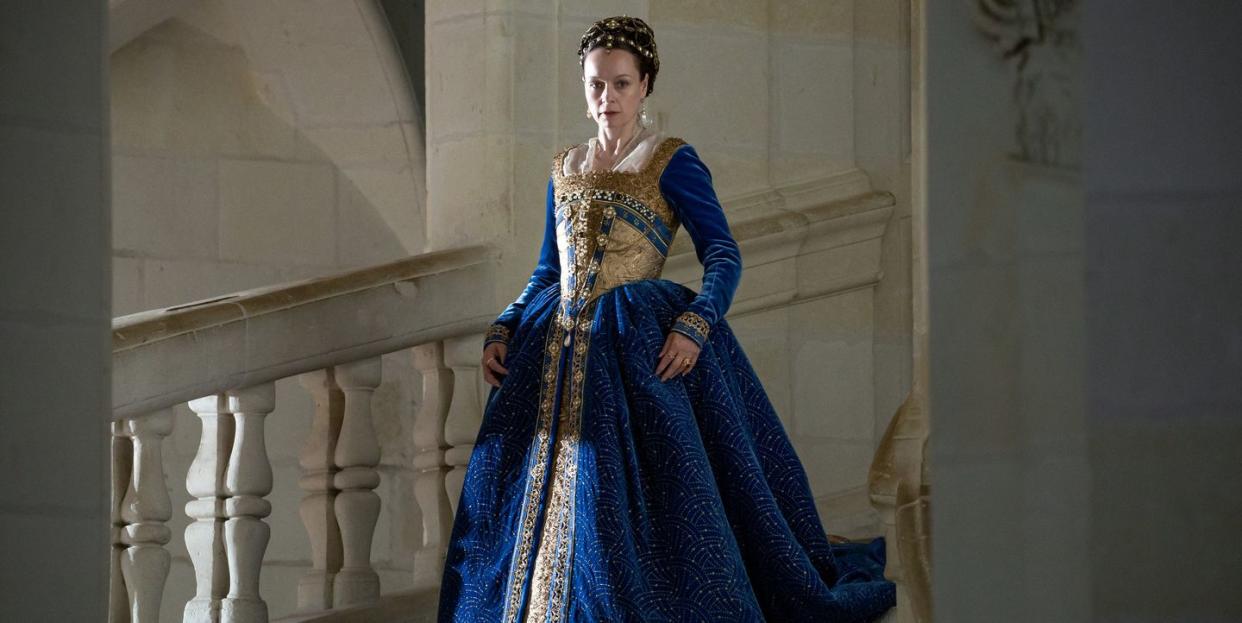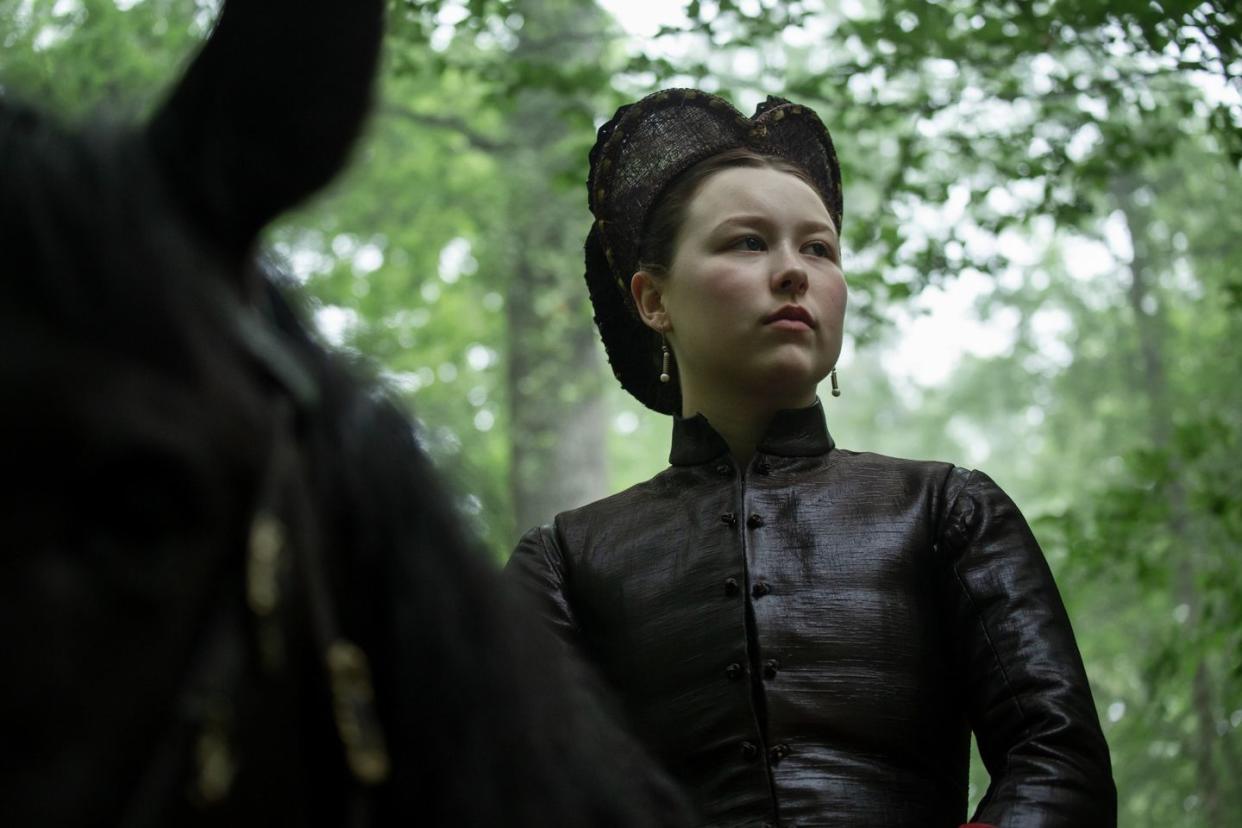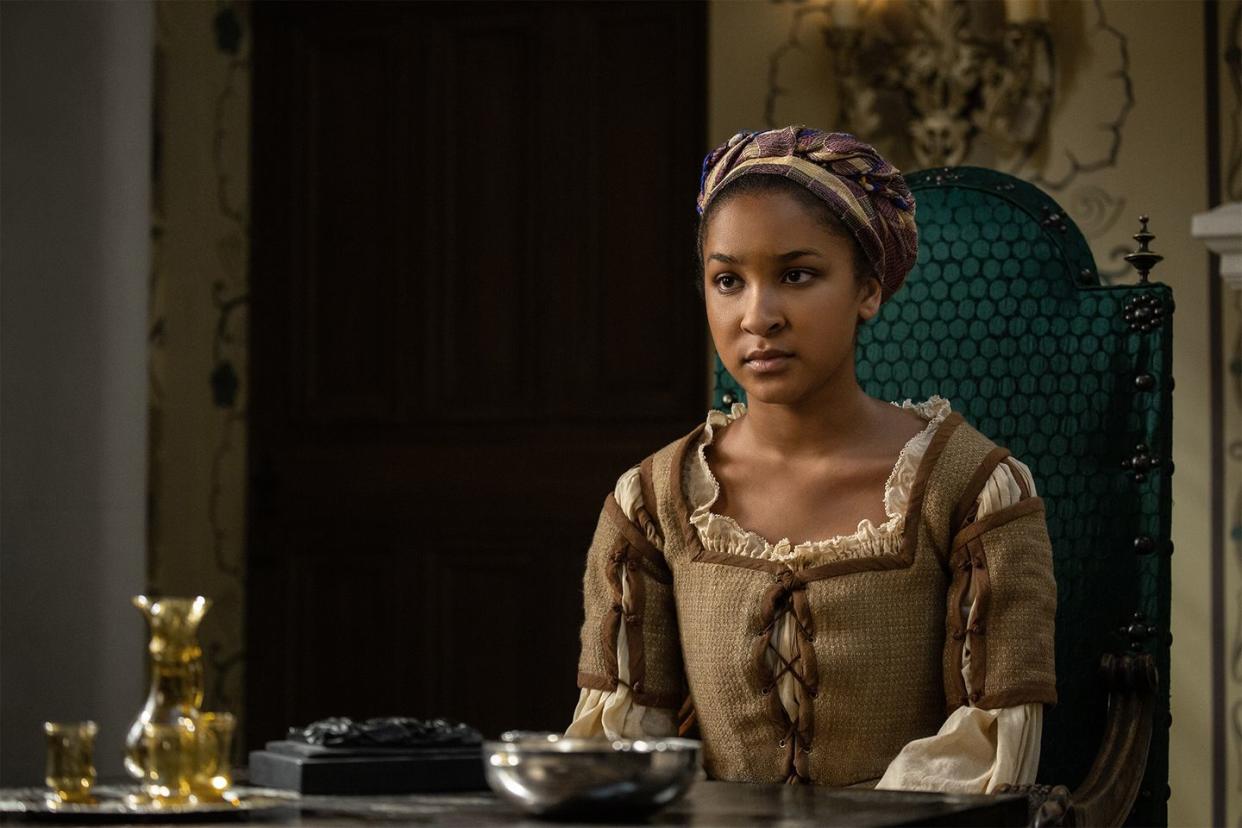The Serpent Queen Reveals Just How Modern Catherine De Medici's Story Really Was

"Hearst Magazines and Yahoo may earn commission or revenue on some items through the links below."
The Serpent Queen is a series more than a decade in the making. The show's titular monarch, Catherine de Medici, first captured the imagination of executive producer Erwin Stoff more than 16 years ago, when he happened upon Leonie Freida's book, Catherine de Medici: Renaissance Queen of France.
"What interested me is what a completely contemporary, modern character Catherine de Medici was. And in a world where we talk about glass ceilings, she was somebody who broke a concrete ceiling, and she did it against all odds," Stoff tells T&C. But the timing wasn't quite right, so he waited.
"Good ideas never leave you," Stoff says, and a couple of years ago, the concept came back around. That's when he called Justin Haythe.
Haythe, who is perhaps best known for writing the screenplay for the 2008 film Revolutionary Road, wasn't looking to do a period show like the one The Serpent Queen would become, or even a show about royals, but Freida's depiction of Catherine changed his mind. "I thought this was an incredibly modern woman, and I thought that she was an anti-hero. We have so many great male anti-heroes; Corleone and Soprano and Walter White. An audience will tolerate somebody doing terrible things in order to survive in order accomplish their goal, if you sympathize with them. But I couldn't think of a female anti-hero like that," he says.
"And when I read Freida's book, I just thought that's precisely who Catherine was. She just happened to be a woman, happened to live in 16th century France, and was rising to all of those challenges the way I would, or I would hope I would. It wasn't like a history lesson. It wasn't reading about somebody who seemed unrelatable—and so the tone of the show immediately came to me because of her, the absurdity of it, the humor, the wit, and at the same time, the danger of that world. I thought that she was, as Erwin said, utterly modern."

Here, Haythe speaks with Town & Country about how closely the show mirrors history, why he opted to break the fourth wall, and the story behind the title sequence.
How would you describe the show's relationship to both history and the book it's based on?
I really admire Leonie Freida's book; it's an academic achievement, but the tone is very different. I think the book has a lot of sympathy for Catherine. I didn't want to do a sympathetic portrait or the traditional portrait of Catherine, which is as a villain. She's primarily viewed as a villain in history, someone responsible for the St. Bartholomew's Day massacre.
I wanted the stakes of the day to feel incredibly real, to do a modern portrait of these characters in this world, but to never undermine the importance or danger of the challenges they were facing at a time. Even though the challenges may feel antique to us—war with the Holy Roman Emperor, or plague, or black magic—I wanted them to feel true because I think an audience will care about them if they see the characters caring about them. So in that sense, there's the spirit of truth all the time with history.
Also history has absurdity. There's a scene early on in the show where the kids are throwing furniture at each other. This really happened and they actually killed someone by mistake doing this. It was absurd. But at the same time, if we look at history, it's been so homogenized and whitewashed. You would think history was only populated by noble white people, which of course it wasn't. There's a whole other area of the story that is open for invention because these people were written out of history. The servants, the people making the dresses, the people tilling the fields, these people aren't recorded in the history, and there's room for invention there.

The British accent in period dramas has become shorthand for foreign. What was your approach to accents in the show?
I've been down that road before with accents, and then you think, "Why are we doing an accent? They would be speaking French. This is ridiculous."
So the idea was, everyone talk in their own accents. And what was interesting is there were certain people who aren't used to hearing their accents in a show like this, like American or Australian, that really have to be given permission. I think it added to what feels contemporary and relatable about it. I don't know if the French in the Renaissance had a word for "wow," right? But I bet they did, some version of it. So I don't mind if the character said, "Wow." It doesn't all have be RP, especially because the whole idea of class is a little bit of a hoax. Someone once said, “it's just about if your grandmother owns silver.” Everyone's an upstart; everyone is trying things on; the king is trying things on. So we have Irish; we have English; we have Australian; we have Dutch; we have American; we have Norwegian accents, and I think it really became part of what makes the show contemporary.
Breaking the fourth wall also definitely adds to that contemporary feeling. How did you decide to use that trope?
I've always liked the idea of portraying a villain from history who would make their case and say, "Well, you think I'm a villain. I'm Ivan the Terrible, I'm the Serpent Queen, whatever. But let me explain to you why I did the things I did. And then you be the judge, because the people who didn't do the things I did are dead at the side of the road and you've never heard of them."
And I wanted her to address not the audience, but to address somebody who would think a royal show has nothing to do with them. So she pulls this servant girl out of the kitchen and says, "Hey, I'm just like you."
I didn't want her to just address the audience. I didn't want her in the direct address to only be commenting on the scenes. I wanted her to be explaining it to somebody as an act of manipulation, because she wants something out of that person.
She would clarify what was happening so that you don't need to understand the history. When she spits in the glass or when she's being examined by the Pope's doctor and says, "How is this different from what the soldiers were going to do to me? Not much." There's a kind of humor and rightness to that, but it's also saying, "This is my story." It's not a royal story that's over there in a frame. This is a story of survival. I felt that was a way to do it. Again, I couldn't think of a direct address, which I had seen where I know who she's talking to. And as the series goes on, you realize she's telling the story for a very specific purpose. She's trying to move Rahima down the road to do something for her.

How did the intro sequence come about?
The first draft I wrote of the show had the opening sequence of her walking through the palace at night and approaching the throne and the snakes coming out. That was one of the first things I ever wrote. In terms of accomplishing it practically, it was a whole other thing.
But this is a show that has magic. We never cross the line and say magic really exists, but this is a world where people believe in magic, and I think that that was really important to respect what mattered to the people at the time. Of course, snakes, serpents, she was called the Serpent Queen, which is an image I think she nurtured. It's much easier to control your populace if they're scared of you. But of course as a symbol, there's none richer.
You Might Also Like
